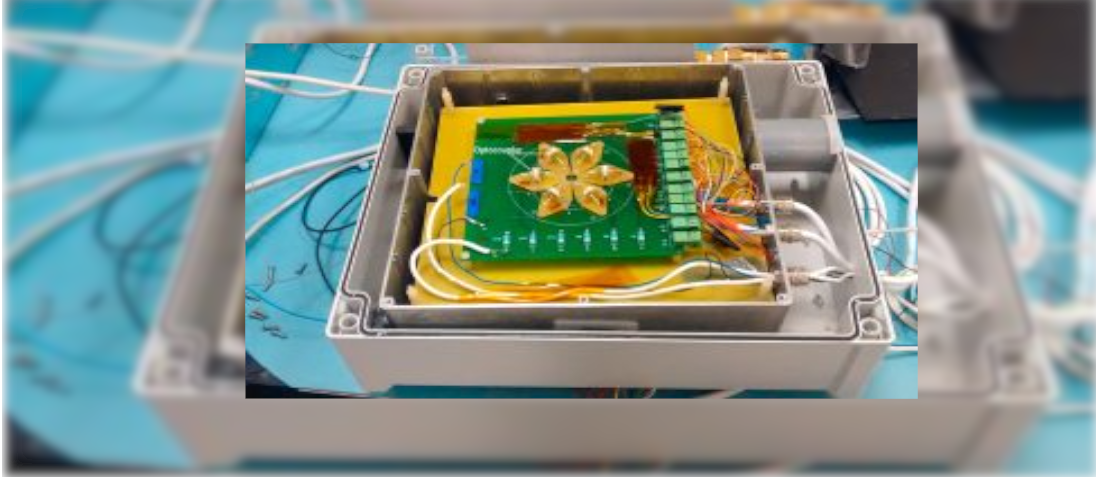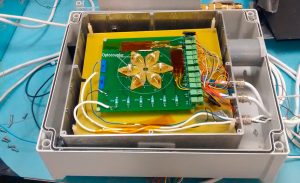
Low Temperature Radiation Test of High Voltage Optocouplers for Space Applications
- Posted by doEEEt Media Group
- On February 12, 2020
- 0
Introduction
Previous studies in radiation induced degradation in optocouplers at room temperature indicated that the most affected parameters were CTR and dark current (1,2). This fact is also applicable to high voltage (HV) optocoupler where the working voltage could go up to 10KV.
In space applications, optocouplers may need to work at very low temperatures. Under this low temperature operating conditions, the device degradation subjected to radiation exposure may show different behaviour compared to a standard radiation test under room temperature. The purpose of this paper is to analyse the effects of proton displacement damages up to 8•1011p/cm2 and total ionisation dose up to 100Krad (Si)) at room and low temperature (i.e. 25ºC and -40ºC) on custom assemblies of High Voltage (HV) Optocouplers. The HV opto-coupler assembly, radiation setups for low temperature Gamma and Displacement Damage radiation tests are described in detailed.
The radiation testing board consists of six optocouplers connected in parallel with a protection resistor of 1MΩ. During either proton radiation or gamma radiation exposure, the monitored parameter at low temperature was the Current Transfer Rate when LEDs IF= 1 mA and optodiode VRWM = 5kV.
Low Temperature Radiation Setup
Both gamma and proton radiation had to be performed with the possibility of keeping an optocoupler at a stable temperature of -40ºC at the radiation facility. Several cooling options were considered. Finally, it was decided to use a small chamber with a window being cooled with liquid nitrogen in a close-loop configuration to allow precise PID temperature control of the samples. A small (approx. 100 liters) liquid nitrogen vessel was required near the radiation area and it was filled periodically to keep the temperature stable. Figure 2a shows the gamma radiation set up whereas figure 2b shows the proton radiation set-up at proton radiation facility.
Radiation Campaign
Proton radiation campaign was performed at the Cyclotron Resource Centre at the Université Catholique de Louvin (UCL). The Cyclone is a multiparticle, variable energy, cyclotron capable of accelerating protons up to 65 MeV. Table I show proton radiation conditions applied to the HV optocouplers.
Gamma radiation campaign was performed at the RADLAB (Gamma Radiation Laboratory) at the Centro Nacional de Aceleradores-CNA (University of Seville, CSIC & Junta de Andalucía). The RADLAB is based on a 60Co gamma radiation source, the dose rate uniformity in the radiation field was better than 95% and the expanded uncertainty associated with the measurement is +/- 4.2%. Table II show gamma radiation conditions applied to the HV optocouplers.
The intermediate measurements performed after each proton and gamma radiation step are described in table III. The dark current at VRWM=1kV and VRWM=5kV, the forward voltage at IF from 0 to 10 mA and the CTR (Current Transfer Rate) at VRWM=1kV and VRWM=5kV and IF= 0.1 mA and 1 mA, were measured at each intermediate step.
GET IN TOUCH TODAY!
Do you have questions? Contact us!
Read or download the full report below
- Space-Grade components available for immediate delivery - April 10, 2025
- Exclusive stock on doEEEt: How to access and request - April 10, 2025
- Managing EEE components for LEO and lower cost space missions - December 17, 2024






0 comments on Low Temperature Radiation Test of High Voltage Optocouplers for Space Applications